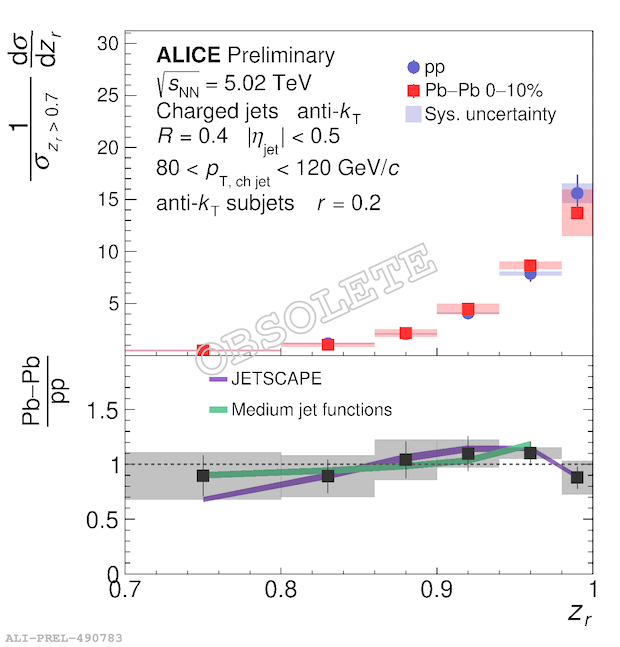
Measurement of leading subjet $z_r \equiv \frac{p_{\mathrm{T}}^{\mathrm{ch\; subjet}}}{p_{\mathrm{T}}^{\mathrm{ch\; jet}}}$ distributions in proton-proton and Pb-Pb collisions. The jet sample consists of inclusive charged particle jets reconstructed with the anti-$k_{\mathrm{T}}$ algorithm for $R=0.4$. The subjets are then reclustered from the jet constituents with the anti-$k_{\mathrm{T}}$ algorithm with radius $r=0.2$. The distributions are normalized to the integral of the distribution in the specified $z_r$ range.
The distributions are compared to two theoretical predictions:
(1) JETSCAPE: Predictions from the JETSCAPE Collaboration based on the JETSCAPE 3 event generator framework, with the MATTER+LBT jet quenching model with virtuality-dependent qhat, and a recoil/hole subtraction scheme implemented equivalently for both the jets and the subjets.
https://inspirehep.net/literature/1725714
(2) Medium jet functions: Calculations provided by F. Ringer and N. Sato, based on SCET using jet fragmentation functions extracted from jet RAA data. The calculations are shown for full jets with $100 < p_{\mathrm{T}}^{\mathrm{jet}} < 160$ GeV/$c$, which corresponds approximately to the charged particle jet $p_{\mathrm{T}}^{\mathrm{ch jet}}$ range in the measurement. The highest $z_r$ bin is excluded, since threshold resummation and hadronization are not yet included in the calculation. The distributions are accordingly normalized to the integral of the data excluding the highest $z_r$ bin.
https://inspirehep.net/literature/1854821
